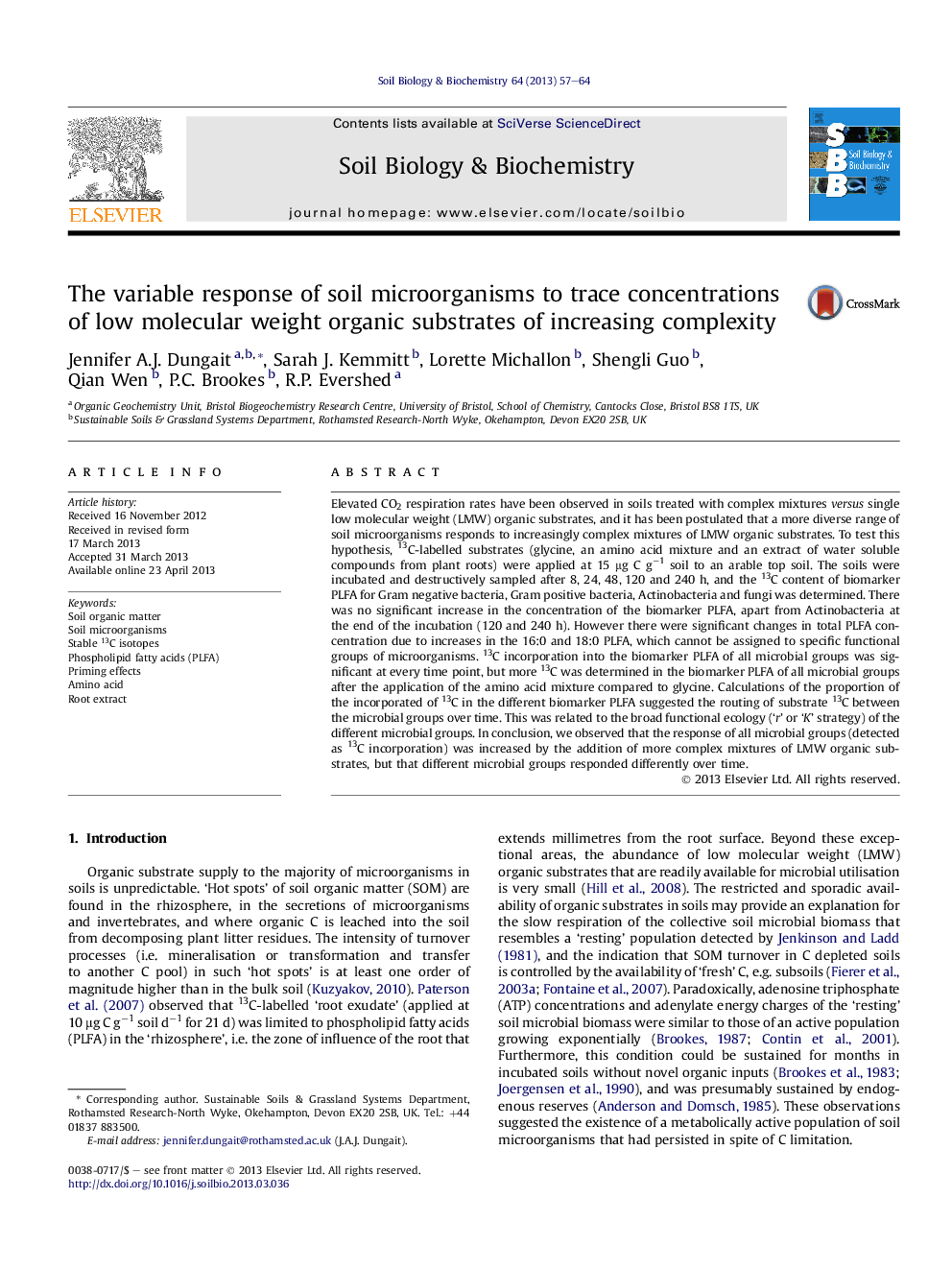| Article ID | Journal | Published Year | Pages | File Type |
|---|---|---|---|---|
| 2024762 | Soil Biology and Biochemistry | 2013 | 8 Pages |
•Trace amounts of substrates significantly increased total PLFA concentrations.•Greater total PLFA concentrations were due to increases in non-biomarker PLFA.•More 13C was incorporated from an amino acid mixture versus a single amino acid.•The response to substrate addition over time differed between microbial groups.
Elevated CO2 respiration rates have been observed in soils treated with complex mixtures versus single low molecular weight (LMW) organic substrates, and it has been postulated that a more diverse range of soil microorganisms responds to increasingly complex mixtures of LMW organic substrates. To test this hypothesis, 13C-labelled substrates (glycine, an amino acid mixture and an extract of water soluble compounds from plant roots) were applied at 15 μg C g−1 soil to an arable top soil. The soils were incubated and destructively sampled after 8, 24, 48, 120 and 240 h, and the 13C content of biomarker PLFA for Gram negative bacteria, Gram positive bacteria, Actinobacteria and fungi was determined. There was no significant increase in the concentration of the biomarker PLFA, apart from Actinobacteria at the end of the incubation (120 and 240 h). However there were significant changes in total PLFA concentration due to increases in the 16:0 and 18:0 PLFA, which cannot be assigned to specific functional groups of microorganisms. 13C incorporation into the biomarker PLFA of all microbial groups was significant at every time point, but more 13C was determined in the biomarker PLFA of all microbial groups after the application of the amino acid mixture compared to glycine. Calculations of the proportion of the incorporated of 13C in the different biomarker PLFA suggested the routing of substrate 13C between the microbial groups over time. This was related to the broad functional ecology (‘r’ or ‘K’ strategy) of the different microbial groups. In conclusion, we observed that the response of all microbial groups (detected as 13C incorporation) was increased by the addition of more complex mixtures of LMW organic substrates, but that different microbial groups responded differently over time.
